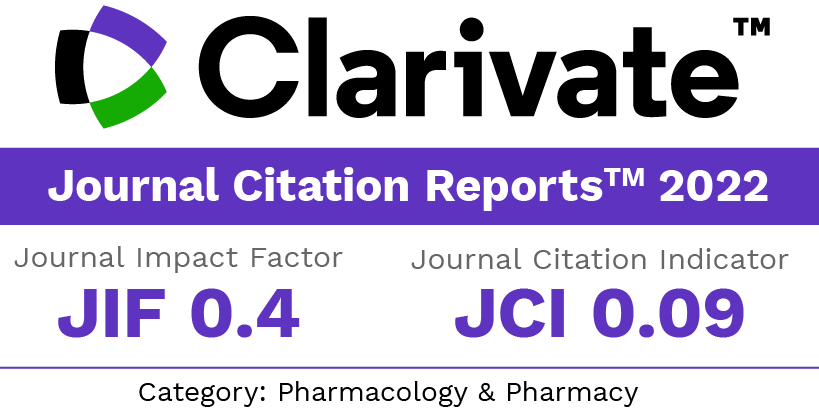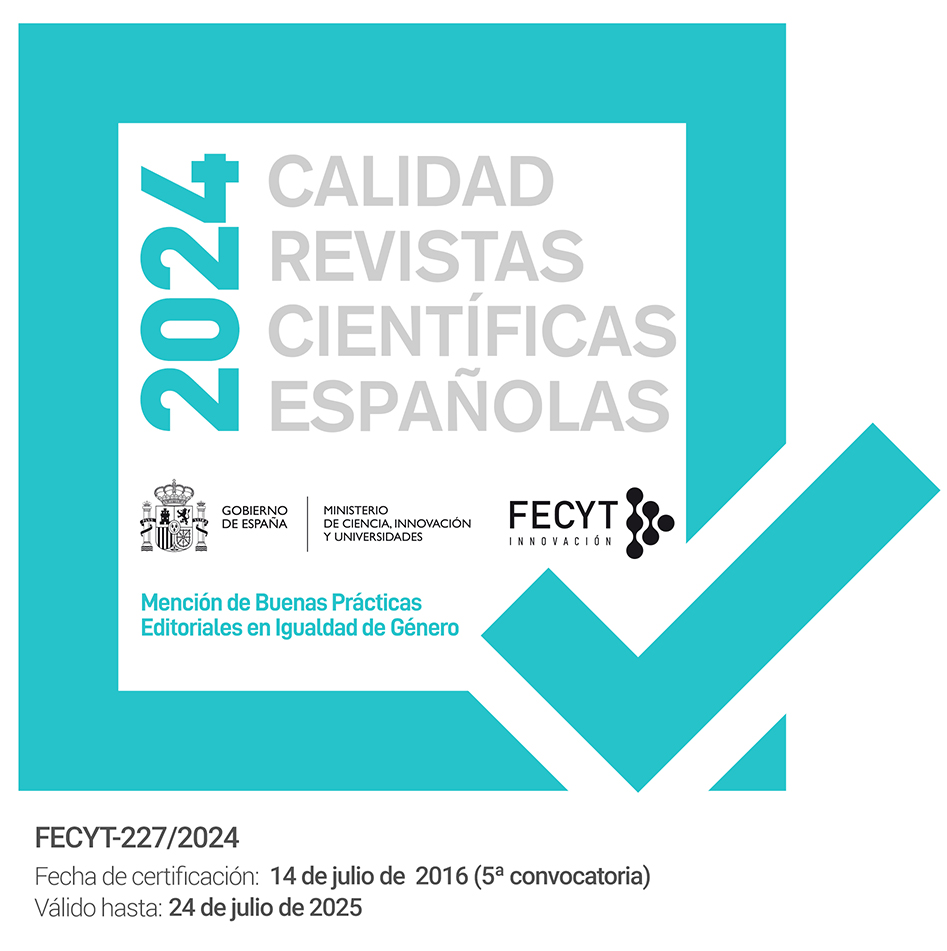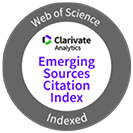Validation of potentiometric method to determine the degree of deacetylation of chitosan
Keywords:
Degree of deacetylation (DD), Potentiometric method, Chitosan, The validation of analytical methodsAbstract
The purpose of this study was to validate, in accordance with international standards, a potentiometric method todetermine the degree of deacetylation of chitosan samples derived from lobster chitin. To ensure a complete reactionbetween the analyte and the HCl solution, the samples were heated to temperatures of up to 60ºC. The change in pHand the methyl orange method, as a visual indicator were used to detect the fi rst infl ection point. The transition intervalfell within the narrow pH acid range of 2 to 4. From an analytical point of view, no interference was observed onthe potentiometric curve in the absence of the analyte, thus showing that the method was suffi ciently selective. For thedetermination of the percentage of free amino groups, the method proved to be linear within the 10.0 to 15.0 mg/mLrange, as well as precise and exact.Downloads
References
Agulló E, Mato R, Peniche C, Tapia C, Heras A, Pastor de Abram A. Generalidades. En: Pastor de Abram A. (ed.) Quitina y Quitosano: obtención, caracterización y aplicaciones. Programa CYTED, CIAD y Pontificia Universidad Católica del Perú. Lima, Perú. 2004; Agosto: pp. 44-48.
Singla AK, Chawla M. Chitosan: some pharmaceutical and biological aspects-an update. J. Pharm. Pharmacol. 2001; 53: 1047-1067.
Chatelet C, Damour O, Domard, A. Influence of the degree of acetylation on some biological properties of chitosan films. Biomaterials. 2001; 22(3): 261-268.
Argüelles W, Heras Caballero A, Acosta N, Galed G, Gallardo A, Miralles B, et al. Caracterización de quitina y quitosano. En: Pastor de Abram A. (ed.) Quitina y Quitosano: obtención, caracterización y aplicaciones. Programa CYTED, CIAD y Pontificia Universidad Católica del Perú. Lima, Perú. 2004; Agosto: pp. 195-197.
Broussignac P. Chemistry Industry Genie Chimica. 1968; 99: 1241.
Muzzarelli RAA. Chitin. Pergamon Press, Oxford. 1977.
Ke H, Chen Q. Potentiometric titration of chitosan by linear method. Huaxue Tongbao. 1990; 10: 44-46.
Xuan J, Lirong Ch, Wei Z. A new linear potentiometric titration method for the determination of deacetylation degree of chitosan. Carbohydr. Polym. 2003; 54: 457-463.
Domszy JG, Roberts GAF. Evaluation of infrared spectroscopic techniques for analysing chitosan. Makromol. Chem. 1985; 186: 1671-1677.
Khan TA. Reporting degree of deacetylation values of chitosan: the influence of analytical methods. J. Pharm. Pharmaceutic. Sci. 2002; 5(3): 205-212.
Domard A, Rianudo M. Preparation and characterization of fully deacetylated chitosan. Inter. J. of Biological Macromolecules. 1983; 5: 49-52.
ICH Q2A. Harmonised Tripartite Guideline. Text on Validation of Analytical Procedures. 1995, Disponible en http//www.fda.gov
Shap J. Quality in manufacture of medicines and other healthcare products. Part 5: Quality control. London: Pharmaceutical Press; 2000. p. 283-358.
United State Pharmacopeia (USP 28). United States Pharmacopoeia XXVIII and National Formulary 23st: United States Pharmacopeial Convention. 2005, Versión Electrónica.
Broussignac P. Chitosan: a natural polymer not well known by the industry. Chem. Ind. Genie Chem. 1968; 99(9): 1241-1247.
Solomons TWG. Fundamentals of Organic Chemistry. 4ta Edition, 1994. ISBN-047158987-X.
Fernández M, Heinämäki J, Räsänen M, Maunu SL, Karjalainen M, Yliruusi J et al. Solid-state characterization of chitosans derived from lobster chitin. Carbohydr. Polym. 2004; 58: 401-408.
Hidalgo C. Caracterización de quitosanas derivadas de quitina de langosta. Tesis de Maestría. Instituto de Farmacia y Alimentos, Universidad de la Habana, 2007.
Downloads
Published
How to Cite
Issue
Section
License
The articles, which are published in this journal, are subject to the following terms in relation to the rights of patrimonial or exploitation:
- The authors will keep their copyright and guarantee to the journal the right of first publication of their work, which will be distributed with a Creative Commons BY-NC-SA 4.0 license that allows third parties to reuse the work whenever its author, quote the original source and do not make commercial use of it.
b. The authors may adopt other non-exclusive licensing agreements for the distribution of the published version of the work (e.g., deposit it in an institutional telematic file or publish it in a monographic volume) provided that the original source of its publication is indicated.
c. Authors are allowed and advised to disseminate their work through the Internet (e.g. in institutional repositories or on their website) before and during the submission process, which can produce interesting exchanges and increase citations of the published work. (See The effect of open access).


















